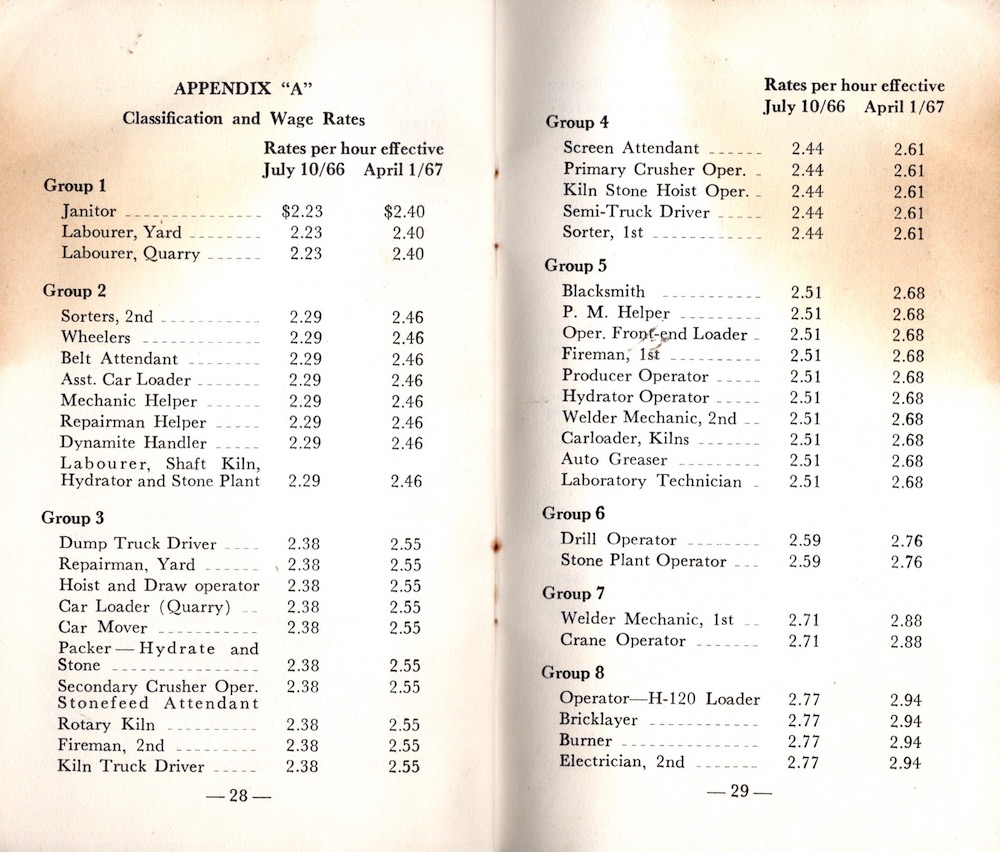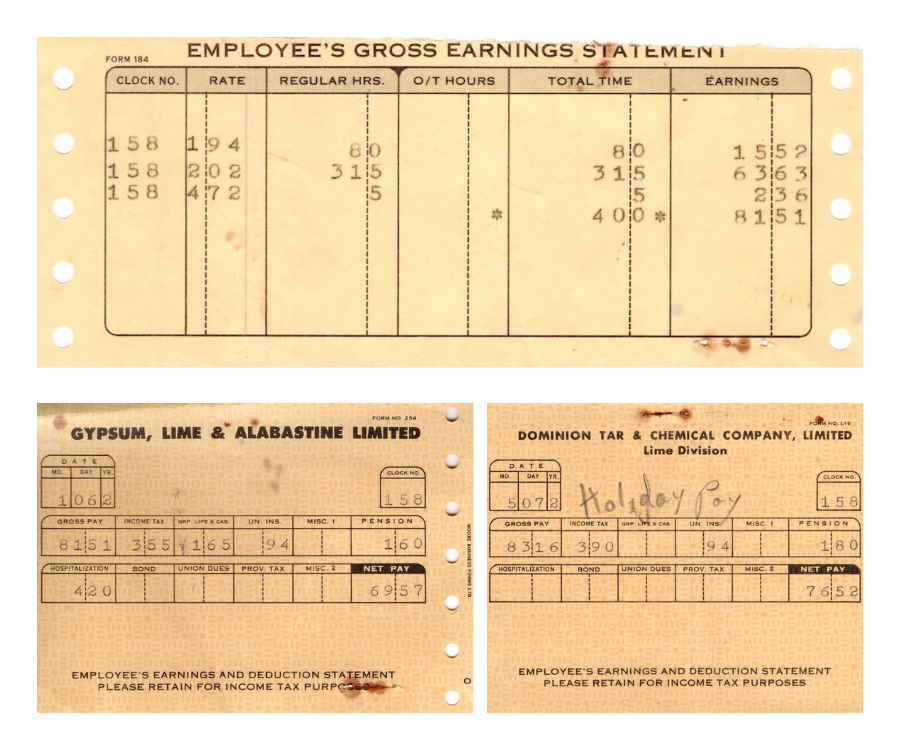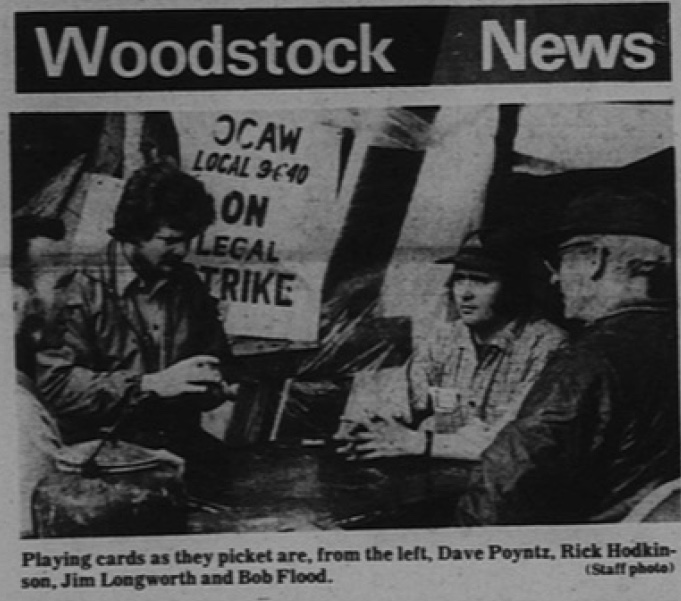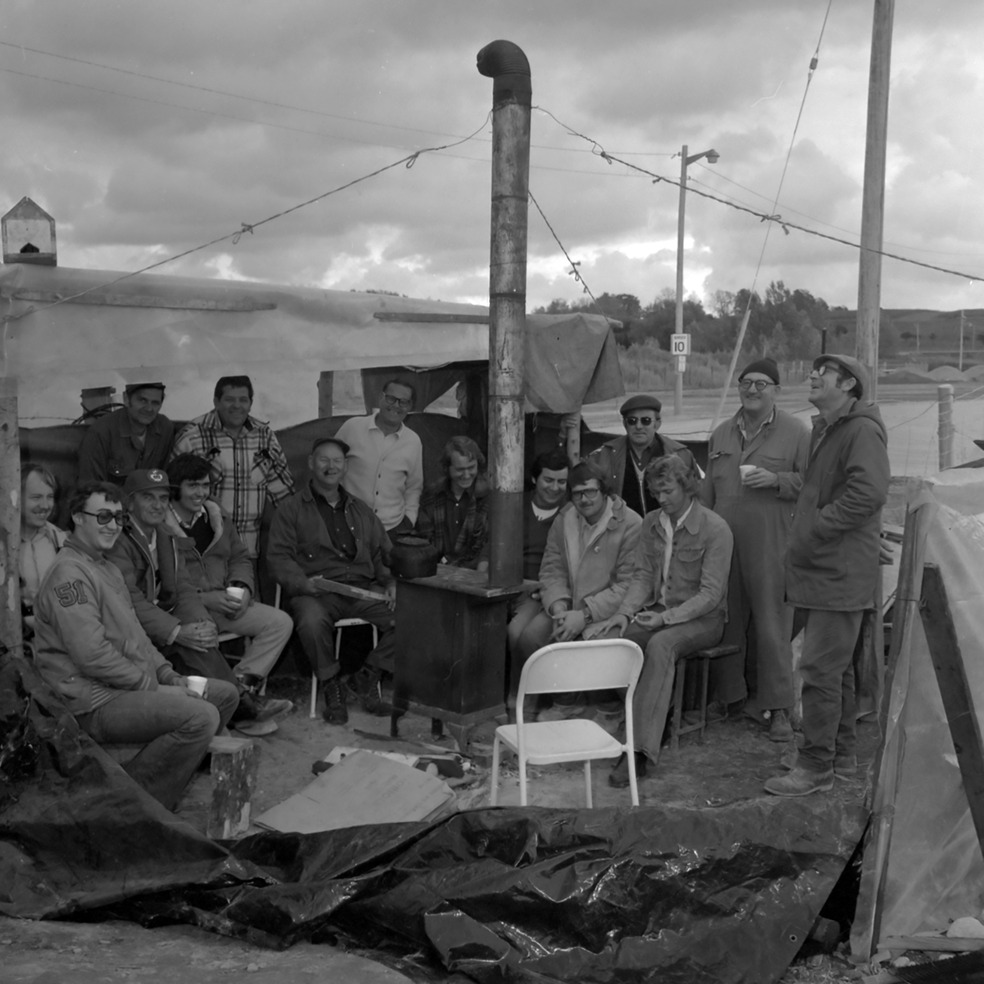Shared Stories: Working at the Quarries
The quarries were a constant presence in the lives of families in the Thames River Valley, marked by ground vibrations, summer swimming and multi-generational involvement in the limestone industry.
In the audio clip below, Sandra Spratt explains how her husband followed in his father’s and grandfather’s footsteps to start working at the quarry.
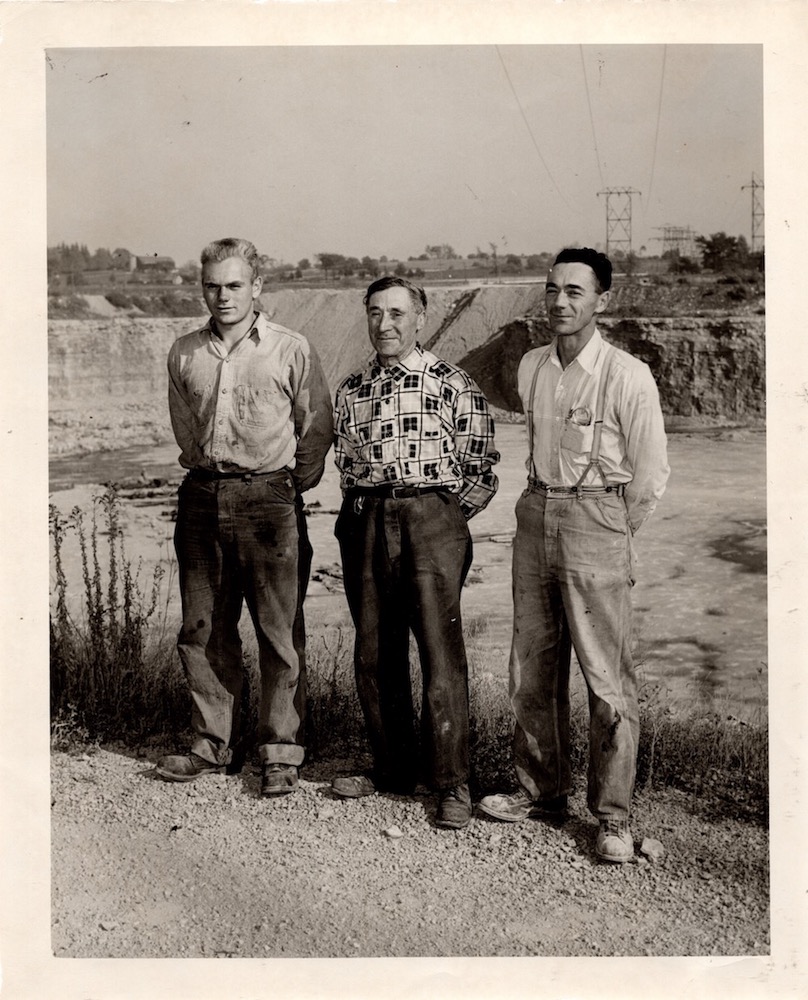
Listen to the audio clip with transcript: A Spratt Family Affair
Quarry Quandaries
A collective agreement from 1966 shows that hourly wages were organized into nine groups (ninth group not shown in photo below) at Domtar’s quarry. Quarry labourers could expect to be paid $2.23 an hour in 1966. A dynamite handler was paid $2.29, a dump truck driver or rotary kiln operator – $2.38, and an operator at the crusher of screens – $2.44. Blacksmiths, drill operators and electricians were paid between $2.51 and $2.77. All employees received a $0.17 raise the following year, in 1967. While Spratt describes that the quarries were able to entice many workers to stay on for a steady wage, it was also true that having 3 quarries side by side inspired comparisons.
Click the photo below for a closer look at the paystubs and different wage rates of quarry workers from 1962.
Labor Disputes in the 1970s
With Domtar, Beachvilime, and Stelco at each others’ doorsteps, workers knew when “the grass was greener on the other side.” On October 1, 1975, Domtar workers walked out, and a 20-week strike began. The crushers were emptied, trucks were parked, and oil and gas were shut off at the kilns. A logbook about the events of the strike notes that pickets were suspected of releasing brakes on strings of railroad cars and throwing stones to break windows while a resolution was pending. Gates were installed at the plant entrance on October 27, and lights, barbed wire, and locks were applied to various facilities. A resolution was ultimately found in February 1976, and the site was back up and running.
In November of 1978, the Oil Chemical and Atomic Workers, local 9-640, was, again, at a standstill with the quarry officials. Workers were seeking wage parity with the other two, local lime quarries. They also requested extended vacations after 30 years with the company and improved health and safety codes. Where early employees of the quarries worked in overalls, gloves, and hats without many safety protocols in place, these strikes brought about better safety systems and better pay than even what the Spratts were won over by.


